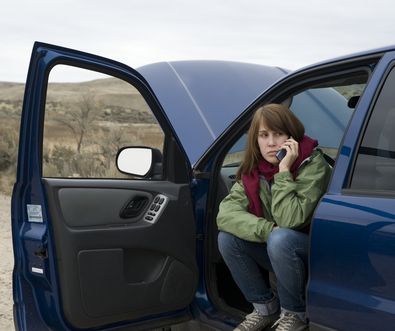Anthony Greenhalgh, Collision and Autobody Specialist at Jerry Seiner Dealerships, gives you blow-by-blow tips.
Each year thousands of people are involved in traffic accidents. If you are one of those unfortunate people, do you know what to do immediately after an accident? First of all, try to remain calm. Then follow these steps:
1) Keep an Emergency Kit in your glove compartment.
Carry a cell phone, pen and paper, a disposable camera to take photos of vehicles at scene and a card with information about medical allergies or conditions that may require special attetnion if there are serious injuries. Also keep a list of contact numbers for law enforcement agencies handy. Check with AAA or your insurance company. Cones, flares and warning triangles are good to have in the trunk.
2) Safety First.
Drivers involved in minor accidents with no serious injuries should move cars to the side of the road and out of the way of oncoming traffic. Leaving cars parked in the middle of the road or busy intersection can result in additional accidents and injuries. If a car cannot be moved, drivers and passengers should remain in cars with seatbelts fastened for everyone’s safety until help arrives. Make sure to turn on hazard lights and set out cones, flares or warning triangles, if possible.
3) Exchange Information.
After the accident, exchange the following information: name, address, phone number, insurance company, policy number, driver license number and license plate number for the driver and the owner of each vehicle. If the driver’s name is different from the name of the insured, establish what the relationship is and take down the name and address for each individual. Also make a written description of each car, including year, make, model and color — and the exact location of the collision and how it happened. Finally, be polite but don’t tell the other drivers or the police that the accident was your fault, even if you think it was.
4) Photograph and Document the Accident.
Use your camera to document the damage to all vehicles. Keep in mind that you want your photos to show the overall context of the accident so that you can make your case to a claims adjuster. If there are witnesses, try to get their contact information; they may be able to help you if the other drivers dispute your version of what happened.
5) File An Accident Report.
Although law enforcement officers in many locations may not respond to accidents unless there are injuries, drivers should file a state vehicle accident report, which is available at police stations. If law enforcement is present, they will assist in creating this report. A police report often helps insurance companies speed up the claims process.
6) Know What Your Insurance Covers.
The whole insurance process will be easier following your accident if you know the details of your coverage. For example, don’t wait until after an accident to find out that your policy doesn’t automatically cover costs for towing or a replacement rental car. Check your policy for specifics.
The final question is who will pay for the damages? If the accident is minor, you and the other drivers may decide to handle damages yourselves without insurance company involvement. But this isn’t always the best idea. While another driver may agree to pay for damages on the day of the accident, he may see the repair bills and decide it’s too high. At this point, time has passed and your insurance company will have more difficulty piecing together evidence if you file a claim.
Also you have no way of knowing whether another driver will change his mind and report the accident to his insurance company. He may even claim injuries that weren’t apparent at the scene of the accident This means that your insurance company may end up paying him a hefty settlement, or worse, you could be dragged into a lawsuit. So make sure your insurance company has your version of what happened and check your policy — if damages paid out by your insurance company are below a certain amount, the accident may not be considered chargeable and you will avoid the penalty of a premium hike.
These safety tips were provided by Phillip Reed, Senior Consumer Advice Editor with www.Edmunds.com
For all your automotive needs, go to www.gmguy.com or visit one of three Jerry Seiner Dealerships in Bountiful, Salt Lake City or South Jordan.















Add comment